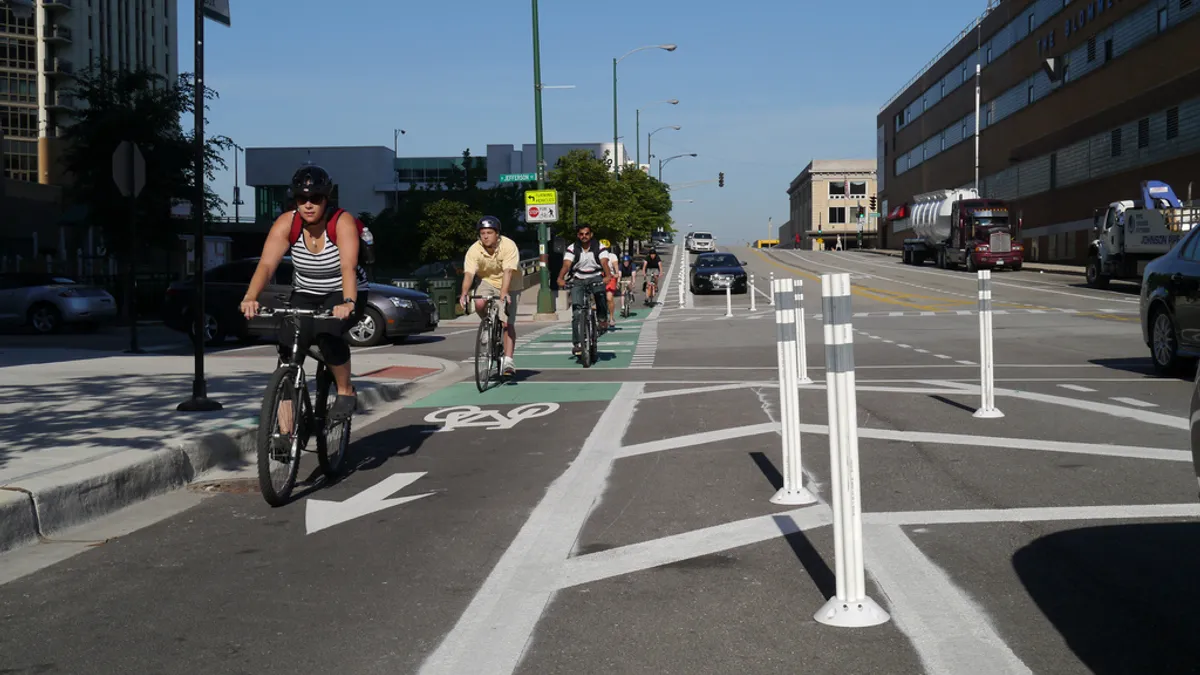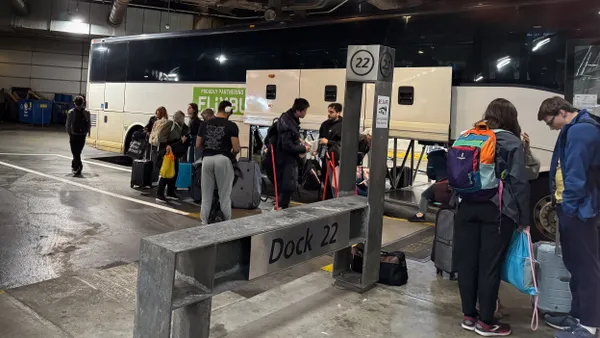Dive Brief:
- Google Maps launched a new multimodal trip-planning feature that incorporates bicycling, ride-hailing and transit options into one trip.
- Users enter a destination, tap "directions" and then tap the transit tab. The app will display routes that include cycling and ride-hailing as first- and last-mile options along with transit directions. It will display details for each leg of the trip including ride cost, wait times, potential traffic and transit departure times.
- A Google spokesperson told Smart Cities Dive via email that the ride-hailing feature will be available throughout the United States, and the cycling feature initially will roll out in 10 cities: Boston; Boulder, CO; Chicago; Denver; Minneapolis; Portland, OR; San Jose, CA; San Francisco; Seattle; and Washington, DC.
Dive Insight:
Google Maps has released new features in rather rapid succession this summer. In July and August alone it added information about transit crowdedness and delays, bike-share data and Live View, an augmented reality feature to help pedestrian navigation.
As the data Google Maps ingests becomes more granular and analytics continue to improve, developers can provide users with greater levels of detail about each trip. These advancements boost convenience for users at a time when consumers increasingly are looking for time-saving consolidated services.
Mobility-as-a-Service (MaaS) platforms, through which users can book and pay for each leg of a multimodal trip, consolidate services and offer convenience. The Google spokesperson told Smart Cities Dive that at this time the Google Maps app does not serve as a complete MaaS platform. Competing trip-planning app Transit began offering integrated mobile ticketing and payments on a limited scale this spring.
Shared scooter information is also not included in the trip-planning feature, according to the Google spokesperson. But previous Google Maps upgrades suggest such a feature could be a possibility in the future. Last year, the app partnered with Lime to display the locations of the company's dockless devices on select cities' maps. The partnership could serve as a first step toward integrating scooters and e-bikes into the first mile/last mile trip-planning feature, and perhaps eventually a complete MaaS platform.












